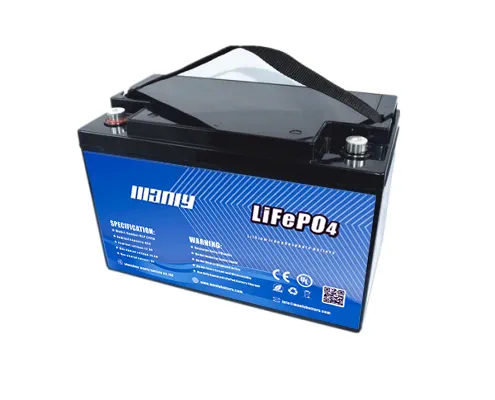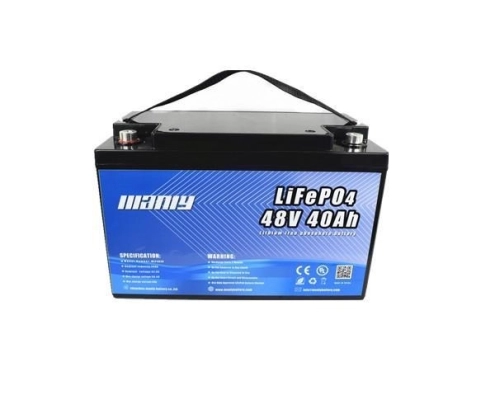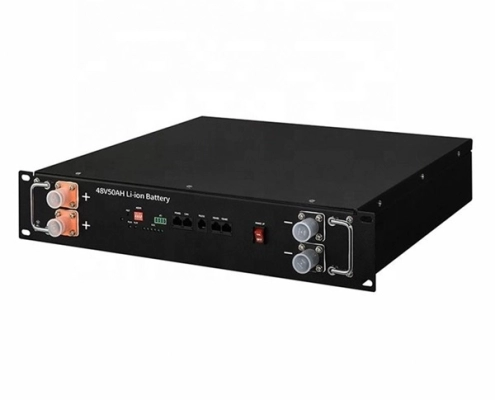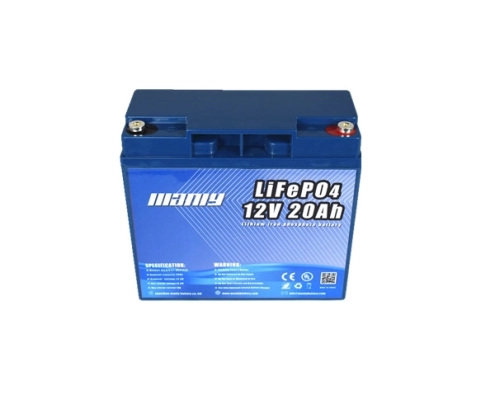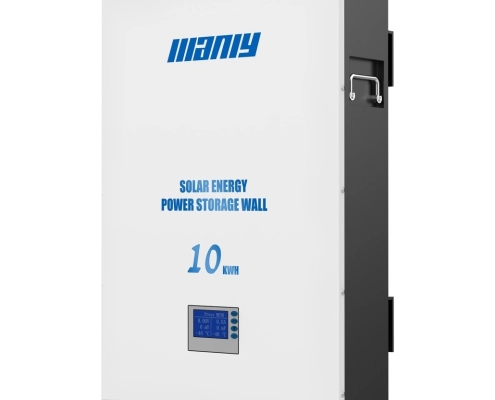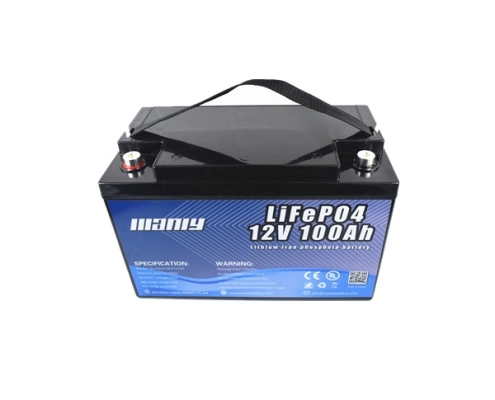Calcolatore della durata della batteria al piombo acido, al litio e LiFePO4
Questa formula stima l'autonomia delle batterie al piombo, al litio e LiFePO4 con una potenza di carico specifica. Inserendo la capacità della batteria (Ah), la tensione (V) e la potenza di carico (W), la calcolatrice determina l'autonomia della batteria (ore) in base all'efficienza del tipo di batteria selezionato.
Calcolatore della durata della batteria
Battery Run Time Calculator: Importance of Choosing Differences Between Battery Types
Batterie al piombo
Lead acid batteries, a time-tested technology, have been in use since their invention in 1859 by French physicist Gaston Planté. Their reliability and relatively low cost make them a secure and financially savvy choice for many applications.
Le batterie al piombo si trovano comunemente in:
- Automobili: La maggior parte delle batterie per auto sono al piombo e forniscono l'energia necessaria per avviare il motore e far funzionare l'elettronica del veicolo.
- Sistemi di alimentazione di backup: Sono spesso utilizzati nei gruppi di continuità (UPS) per l'alimentazione di backup di emergenza.
- Stoccaggio di energia rinnovabile: Le batterie al piombo immagazzinano energia nei sistemi solari ed eolici.
One of the main characteristics of lead acid batteries is their heavy weight and large size compared to other battery types. They have a lower energy density, meaning they store less energy per unit of weight. For example, a typical lead acid battery might weigh between 15 and 30 kilograms. The electrolyte in these batteries is sulfuric acid, and the battery’s operation involves a chemical reaction between the lead plates and the acid.
Lead acid batteries have a cycle life of about 300 cycles, which means they can be charged and discharged about 300 times before their performance significantly declines. They also require regular maintenance. They also have a lower efficiency, with around 80% of the energy put into the battery being retrievable.
Batterie al litio
Lithium batteries, a more modern and high-performance technology, are known for their high energy density, lightweight, and long lifespan. These characteristics instill confidence and reassurance in their performance and longevity.
I vantaggi delle batterie al litio rispetto alle batterie al piombo includono:
- Maggiore densità di energia: Le batterie al litio immagazzinano più energia in un pacchetto più piccolo e leggero.
- Durata della vita più lunga: In genere durano più a lungo, con più cicli di carica-scarica.
- Ricarica più veloce: Lithium batteries can be faster than lead acid batteries.
- Meno manutenzione: Richiedono meno manutenzione e non hanno effetto memoria.
Le batterie al litio sono ampiamente utilizzate nell’elettronica di consumo, nei veicoli elettrici e nei sistemi di energia rinnovabile. Possono durare fino a 1.000-2.000 cicli, molto più a lungo delle batterie al piombo. La loro maggiore efficienza, circa il 90%, significa che è possibile utilizzare una maggiore quantità di energia immessa nella batteria.
Batterie LiFePO4
LiFePO4 batteries, also known as lithium iron phosphate batteries, are an advanced type of lithium battery. Their safety and durability make them a secure and confident choice for high-demand and critical applications.
I vantaggi delle batterie LiFePO4 includono:
- Sicurezza: They are more stable and less prone to thermal runaway or catching fire than other lithium-ion batteries.
- Lunga durata: Le batterie LiFePO4 possono sopportare migliaia di cicli di carica-scarica, il che le rende molto durevoli.
- Ampio intervallo di temperature: They perform well across various temperatures.
- Tassi di scarico elevati: Queste batterie possono fornire un'elevata potenza per applicazioni impegnative.
LiFePO4 batteries have a very long cycle life, often exceeding 2000 cycles, and can maintain about 80% of their capacity even after extensive use. They can handle high discharge rates and be used in extreme temperatures ranging from -20°C to 75°C. Their efficiency is the highest among the discussed types, reaching up to 95%.
Le batterie LiFePO4 sono comunemente utilizzate in applicazioni in cui la sicurezza e la longevità sono fondamentali, come ad esempio:
- Veicoli elettrici: Fornire una fonte di alimentazione più sicura e più duratura.
- Sistemi di accumulo dell'energia: These are used in home and industrial renewable energy storage.
- Batterie marine e camper: Offering reliable recreational vehicle and boat power.
In summary, understanding the differences between these types of batteries is crucial for selecting the right one for your needs. Lead acid batteries are a reliable, cost-effective choice for many traditional applications. Lithium batteries offer higher performance and longer life, making them ideal for modern electronic devices and electric vehicles. LiFePO4 batteries enhance safety and durability, making them perfect for high-demand and critical applications.
Calcolatore dell'autonomia della batteria: il ruolo di capacità, tensione, efficienza e potenza di carico
Capacità della batteria
Capacità della batteria measures the amount of energy a battery can store. It is usually expressed in ampere-hours (Ah), which indicates how much current a battery can supply over a specific period. For example, a battery with a capacity of 10 Ah can deliver 10 amperes for one hour or 1 ampere for 10 hours. Knowing the battery capacity is crucial because it helps determine how long the battery will last under a given load.
Standardized tests are conducted to measure battery capacity, such as the 20-hour rate test. This test involves discharging the battery at a constant current until it reaches a specific cutoff voltage. For instance, a 100 Ah battery would be discharged at 5 amps (100 Ah / 20 hours = 5 amps). The capacity is then calculated based on the discharge current and time.
Voltaggio batteria
Battery voltage is the electrical potential difference between a battery’s positive and negative terminals. It is measured in volts (V). A battery’s voltage affects its ability to deliver power to a load. Higher-voltage batteries can provide more power, making them suitable for high-power applications.
Typical battery voltage levels vary based on their type and application. For example, lead-acid batteries often come in 12V configurations, while lithium-ion batteries can be found in various voltages, such as 12V, 24V, 36V, and 48V. The voltage also influences the battery’s efficiency and performance, impacting the overall runtime.
Efficienza della batteria
L'efficienza della batteria si riferisce alla percentuale di energia immagazzinata nella batteria che può essere recuperata durante la scarica. Diversi tipi di batterie hanno livelli di efficienza diversi. Ad esempio, le batterie al piombo hanno in genere un’efficienza di circa l’80%, il che significa che l’80% dell’energia immessa nella batteria è recuperabile. Al contrario, le batterie agli ioni di litio hanno un’efficienza maggiore, spesso intorno al 90%, e le batterie LiFePO4 possono raggiungere fino al 95%.
Efficiency is critical in determining how effectively a battery can power a load. High-efficiency batteries waste less energy, providing more usable power and extending the battery’s runtime.
Carica potenza
Load power is the amount consumed by the device or system connected to the battery. It is measured in watts (W). Load power directly affects the battery’s discharge rate and, consequently, its runtime. A higher load power will deplete the battery faster, while a lower load power will allow the battery to last longer.
For example, if a device consumes 50 watts and is connected to a 12V battery, it will draw approximately 4.17 amperes (50W / 12V = 4.17A). The battery’s capacity and efficiency determine how long it can sustain this load before recharging.
Perché questi fattori sono importanti nel calcolatore
Il calcolatore del tempo di funzionamento delle batterie al piombo, al litio e LiFePO4 utilizza questi quattro fattori:capacità della batteria, tensione, efficienza e potenza di carico: per stimare la durata di una batteria sotto un carico specifico. Ecco perché ogni fattore è essenziale:
- Capacità della batteria: Determina l'energia totale disponibile per il carico.
- Voltaggio batteria: Influisce sull'erogazione della potenza e sulla compatibilità con il carico.
- Efficienza della batteria: Influisce sulla quantità di energia utilizzabile e sulle prestazioni complessive.
- Carica potenza: Dictates the battery’s discharge rate.
Il calcolatore applica la formula: Capacità (Ah) x Voltaggio (V) x Efficienza/Potenza di carico (W). Questa equazione fornisce un tempo di esecuzione stimato in base ai valori di input. Ad esempio, una batteria da 100 Ah a 12 V con efficienza del 90% che alimenta un carico di 50 W avrebbe un'autonomia di (100 Ah x 12 V x 0,9) / 50 W = 21,6 ore.
In conclusion, while this calculator provides a proper estimate, actual performance can vary based on environmental conditions and specific use cases. For precise calculations and professional advice, please contact our customer service at https://manlybattery.com/contattaci/.

